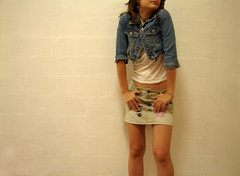Lens
The 'mm' in refers to focal length. These are the first optics to the film/CCD.
Shorter focal length (a smaller value), means a wider angle. Wide angle starts at 35mm.
Wider lens, greater distortion. High level of sharpness achievable.
Fish-eye lens values: 16mm, 10mm, 8mm and 6mm.
Telephoto lens: 60 and above. Goes up to 2000mm. Other than the subject in focus, sharpness is poor.
300-600 used for sports photography
60-200 used for portraits. Here the subject in focus are sharp, while the backgrounds arent. (later on related to depth of field)
60-105 used for half body (usually to provide space between photographer and subject, as well as fading out the sharpness of background)
135-180 used for face area
200 long distance face area (side note: sorry i dont know what the hell i meant by this)
The lesser the elements in the lens, the better. Just imagine a game of chinese whispers.
There are fixed lens (one length only, not adjustable) they are also known as prime lens.
Then there are zoom lens (adjustable focal lengths) eg 24 to 200mm.
F Stops
These control the amount of light coming through the lens.
For example, it may run from 1.4 to 32.
Larger number, smaller opening (aperture), more depth (increased sharpness and detail)
Smaller number, larger opening (aperture), less depth
Typically, aperture values (f stops) of 4, 5.6, 8 are used for portraits, 22, 32 for landscape, fashion.
For zoom lens, eg 24mm-200mm, bearing aperture values of f4~6.3 means that at 24mm, the minimum aperture is f4, however when zoomed to 200m, the minimum aperture is only at f6.3.
Recommended lens to have: 17mm 28mm 60mm 105mm 300mm. This really applies only if you're one of those crazy wannabe weekend warrior photographer like some of my classmates were.
Film
Colour negatives dont produce very accurate colours, and is dependent on printer's processing methods.
Colour positives (or slide) are better mediums.
Black and white however are the best at keeping the tone and quality of the image. (and the actual film material as well)
ASA/ISO
These values register how light sensitive the film is. (or digital setting you keep it at)
Smaller ASA number means that the film is less light sensitive, so it responds slower to the exposure and thus need a longer time to capture the image correctly.
Smaller values provide sharper, more saturated and better contrasted images.
Larger ASA numbers mean that the film is more light sensitive, so it responds faster to the exposure and thus need a shorter time to capture the image correctly.
Images tend to be softer, less sharp, more grainy.
Night Scene/Landscape
You'd need:
- Low ASA/ISO
- Lowest F value
- select 2 midtones to measure the required speed
- adjust the f value an speed to accomodate the sharpness of the picture
- ie f2.8 - 0.5sec
- f22 - 32 sec
You might want to use bulb shutters and cable release to reduce camera shake.
Time of day: 7.30-7.45am
Weather: after showers (increase of reflections)
Night Motion
Best combinations: ASA100 - f11, ASA400 - f22 for a single firework
B shutter, Manual focus at infinity
Multiple exposure to create final image.
For any movement, the settings cant be slower than 1/15sec ASA 400.
Filters
B/W has four kinds of filters
Filters lighten the same colour, darkens the opposite.
- Yellow : skin tones become brighter, fresher
- Orange : sunrays
- Red : Landscape photography (clouds stand out more)
- Green : Trees, grass
Morning and evening tend to produce warm colours
>filter to use blue82
Around noon, there tend to have an increase in blue reflections
>filter to use yellow85
For higher altitude (to remove blue cast from haze, rain mountain tops)
>filter to use yellow81
For tungsten environments, remove yellow
>filter to use blue80
Fluorescent lights tend to create a green cast
UV vs Skylight Filters
No filters, far end turns fuzzy for landscapes
> use UV filter
Skylight filters provides fresh skintones for portraits.
Multicoating helps refract the colours together.
Neutro Density (ND) filters (2,4,8,10) helps cut out light
Polarising (PL) filters are used to cut out interferance. PL- circular filters are more effective than ordinary PL filters.
DIY soft filter: used thumbprint or oil on your usual UV filter. Or cut out a piece of translucent plastic and insert in the grooves of your filter.

No comments:
Post a Comment